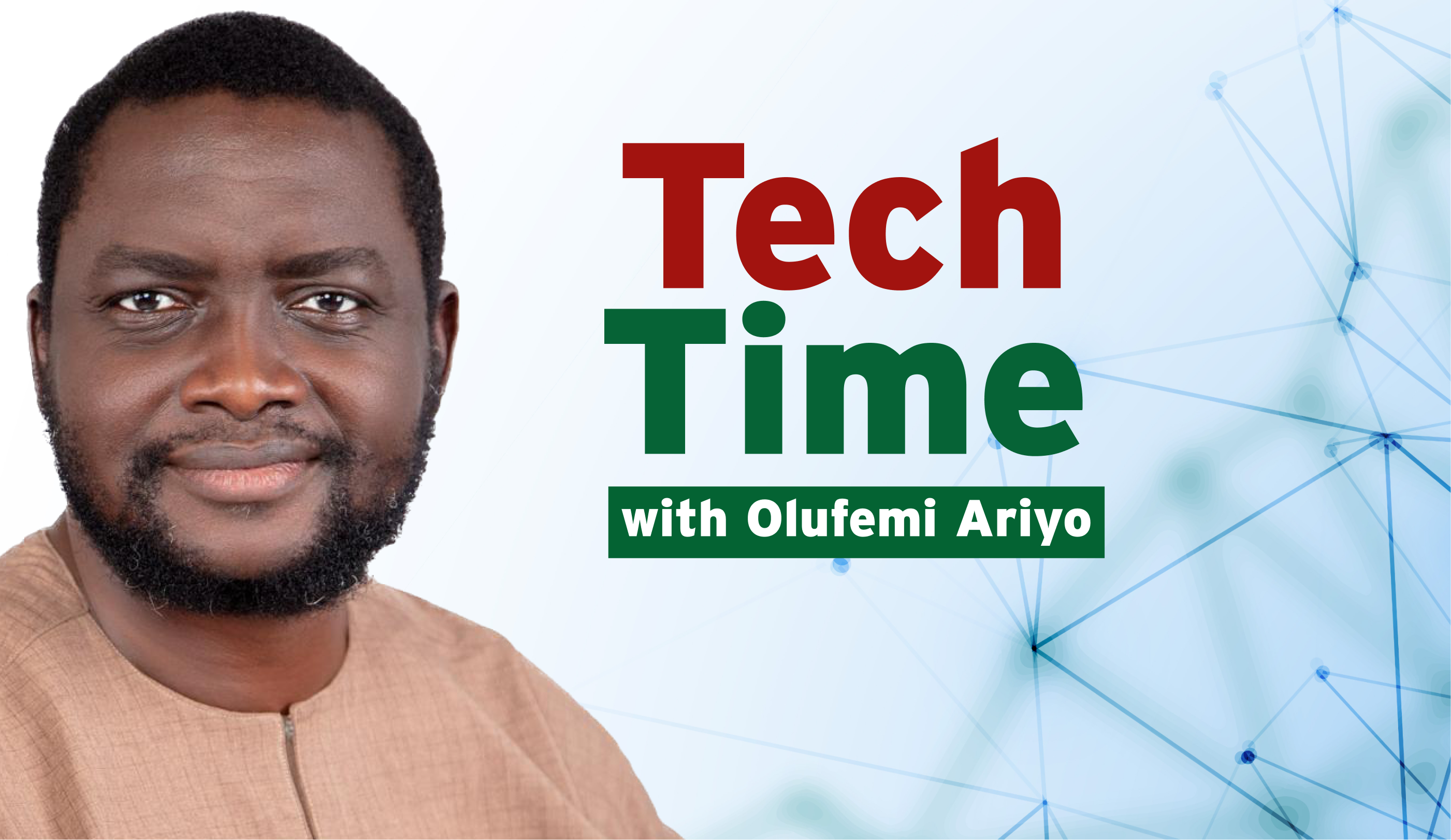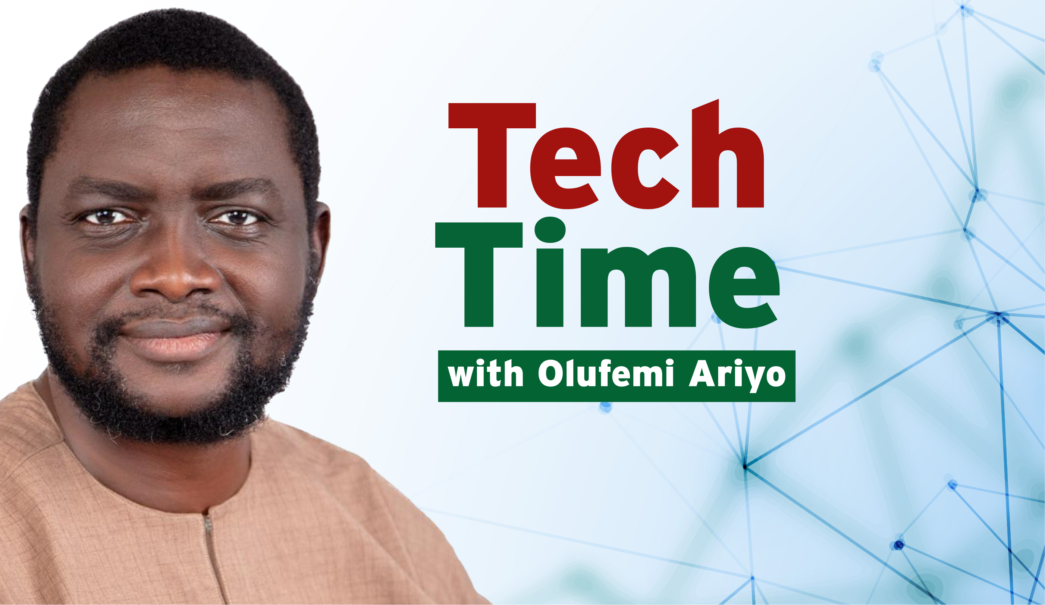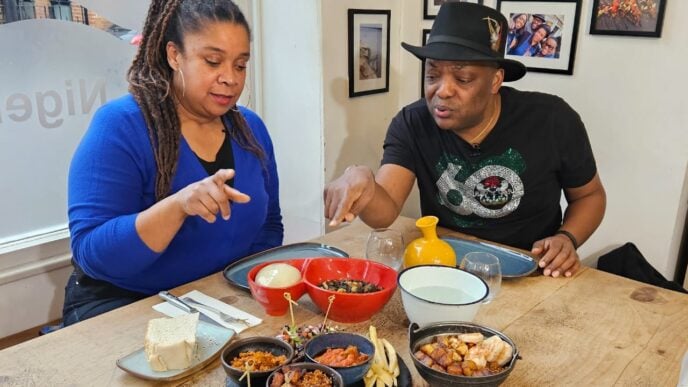The future belongs to young people with an education and the imagination to create, piques Barack Obama. Across Africa, and especially in Nigeria, youth empowerment has become a policy buzzword going from national development plans to NGO playbooks and corporate CSR strategies. Government-backed initiatives, donor-funded programs, and startup competitions have multiplied, all promising to unlock the potential of Africa’s most valuable asset: its youth. Skill acquisition bootcamps, innovation hubs, and million-naira business grants have made headlines and fuelled hope. Yet, despite all this activity, one uncomfortable truth persists: youth unemployment and underemployment remain alarmingly high.
This paradox begs a deeper question — why are so many well-intentioned programs falling short of systemic impact? The answer may lie not in what these programs do, but in whom they fail to reach. While many initiatives target the unskilled with training, or the polished few with funding, they often miss a vast middle layer of youth who are neither beginners nor established entrepreneurs. These are the “almost-ready” — young people with partial skills, informal experience, and serious drive, but who are stranded between learning and launching. This group is not helpless, but they are not yet startup-ready. They are, however, closest to real impact — the ones most likely to build sustainable small enterprises, create jobs in their communities, and move the needle on local economies. Ignoring them isn’t just a gap — it is a missed national opportunity. This paper digs into who these youth are, why they matter, and what it would take to finally build a system that works for those already trying.
1. Who Are the ‘Almost-Ready’?
The ‘almost-ready’ youth sit in a quiet, frustrating space of potential. They are not the completely unskilled — in fact, many of them have made sincere efforts to improve themselves. They have taken a few online courses, attended workshops, perhaps even completed NYSC or a government skill acquisition program. Some run modest side hustles — baking, tailoring, phone repair, design work, or content creation. Others have started and paused small ventures that did not scale, often due to lack of structure or support. They are the youth who show up, who try, who push — but hit a ceiling. They have energy, ideas, and partial know-how. What they often lack is the final layer of professional refinement:
Advertisement
- Mentorship: Someone who has walked the path and can guide them through the pitfalls.
- Structured practice: Real-life projects or incubators where they can apply what they have learned in a meaningful way.
- Capital access: Not millions — often just a basic starter fund (₦100,000–₦300,000) with support, not just disbursement.
- Confidence through exposure: Many have not pitched in a real setting, talked to a customer, or been validated outside their immediate circle.
They are too advanced for beginner-level programs, but not yet eligible for high-stakes grant competitions, accelerators, or venture capital. That in-between zone — too ready for hand-holding, but not polished enough for spotlight — is the missing middle. They are the type of youth who will attend all the local empowerment seminars, download the free PDFs, start an IG page for their idea, but stop short of building something that scales or sustains. Not for lack of will, but due to structural gaps.
Why Ignoring Them Is Dangerous
In a country where 70% of young people are unemployed or underemployed, ignoring the ‘almost-ready’ youth is not just an oversight — it is a developmental risk. These are the individuals closest to impact. The fastest way to increase youth productivity at scale is not always starting from scratch. It is bridging the gap for those already in motion. Without targeted support, these youth:
Advertisement
- Drop out of the entrepreneurial pipeline
- Drift into informal or precarious work
- Become disengaged from civic and economic participation
- Lose faith in public institutions and national programs
The real tragedy? They often have just enough skill and ambition to feel disappointed — like they were almost there, but the system gave up on them too early.
2. Why This Group Is Crucial
The ‘almost-ready’ youth are not just a forgotten group — they are a missed opportunity hiding in plain sight. They are arguably the most scalable, impact-ready, and resilient category within the wider youth demographic. Here is why investing in them is both strategic and urgent:
(a). Easier to Scale: They Need Less Hand-Holding
Advertisement
Unlike complete novices, the almost-ready youth do not require basic orientation or long classroom hours. They already have a foundation — they just need a structured bridge to connect what they know to what the market requires. For example, a young woman in Makurdi who has learned fashion design through an informal apprenticeship may already be earning small income sewing for neighbours. She does not need another “how to sew” course — she needs a micro-incubator that teaches her branding, pricing, digital marketing, and gives her access to ₦200,000 to buy an electric machine. These are low-cost, high-yield interventions. One well-targeted program can move this person from subsistence to sustainability — a transition that takes months, not years.
(b). Closer to Market Impact: Just a Push Away
The almost-ready youth are already in motion. With just a nudge — mentorship, capital, visibility — they can immediately create value. This group does not need to be convinced to act. They are already acting. They just need to be enabled. For an instance, a young man in Ibadan who has been teaching himself UI/UX design online and has completed two freelance jobs for friends may not qualify for high-end tech accelerators. But a 3-month structured challenge with real client projects, mentoring from industry pros, and a ₦150,000 monthly stipend to focus full-time could turn him into a professional designer in weeks, not years. If the goal is to create more employable youth and small enterprises, this group is already closest to that finish line.
(c). More Resilient: Hustle Has Hardened Them
Advertisement
The almost-ready have already struggled. They have failed, restarted, pitched badly, sold to the wrong market, and stayed up trying to learn something new on YouTube with no one to guide them. They have done the hard part and have tried without support. That makes them more resilient than first-timers who still romanticise entrepreneurship or employment. They know it is tough — but they’ve decided to stay in the game. One thought in mind is that of a 28-year-old former NYSC member in Kaduna who has attempted to launch a cassava processing venture, failed due to poor equipment, but returned to work a job while saving up to restart — this is not a passive youth. This is a builder. He is not looking for handouts; he is looking for traction. He needs a localised agri-tech incubator, connections to small processors, and basic seed capital to try again the right way. This kind of entrepreneurial grit is gold — but it often dies silently without the right systems to support it.
The Capacity Ceiling: When Programs Ignore the Middle
Advertisement
By focusing only on beginners and high-performers, many government programs create what I call a capacity ceiling:
- Beginners flood entry-level training programs, sometimes repeating the same basic skills year after year.
- The top 2–5% win grant competitions and accelerator slots, often already equipped with mentors, networks, and pitch experience.
- But the majority, the ones who could have become employers, not just employees, plateau.
They become too trained to be retrained, but not equipped enough to launch. They get stuck in the waiting room of progress, slowly disengaging from the system. And that is dangerous, because when youth lose momentum after already making the effort, it sends a subtle but damaging message: “You are on your own.” That breeds disillusionment, and eventually, disconnection from the economy, from civic life, and from belief in public institutions.
Advertisement
3. Why Government Programs Often Miss Them
Across Nigeria and many parts of Africa, youth empowerment programs tend to follow a familiar blueprint — one that, unintentionally, excludes a majority of promising young people. At the heart of this issue is a binary assumption that youth are either:
Advertisement
(a) Helpless: In need of basic training, orientation, or rescue,
or
(b) Genius: The rare “born entrepreneur” with polished business plans, ready to pitch for ₦5 million and speak fluently on stage.
This model, while perhaps convenient for program design and reporting, leaves out a massive middle layer: young people who are “nearly there” — the almost-ready. They do not need to be rescued or TED Talks. They need a transition track, a bridge between learning and launching, between surviving and scaling.
Case Study: Sarah, the ‘Almost-Ready’ Tailor from Akure
Take Sarah, a 27-year-old tailor from Akure. She learned her trade through a two-year apprenticeship and completed her NYSC in 2019. During service, she took part in a fashion-focused skills program organised by a government SME agency. The training covered basic design, stitching techniques, and business etiquette. She left the program motivated but still lacked:
- A formal workspace
- A decent sewing machine
- Real branding or digital marketing knowledge
- Access to clients outside her neighbourhood
She applied for a ₦2 million federal youth grant but did not make it past the first screening — she had no business registration, financial projections, or formal mentors. She later enrolled in a 2-week bootcamp, but it was designed for beginners — people who had never even held a needle. She found herself repeating old content while desperately needing help on pricing strategies, online sales, or bulk production methods. She attended a “youth empowerment summit”, where big-name CEOs gave inspirational talks, but there was no follow-up, no funding pipeline, and no post-event support. Three years later, Sarah is still hustling, talented, determined, but stuck.
The Structural Flaws in Today’s Empowerment Model
What happened to Sarah is not rare. It’s systemic. Here is what most programs get wrong:
- Grants are too competitive: They are structured like lottery tickets — often requiring polished business plans, registration documents, and pitch decks that the average “almost-ready” youth simply does not have yet.
- Trainings are too basic: They target entry-level learners, repeating foundational content without building pathways to higher-level execution.
- Mentorship is too short-lived: Panels and webinars are great for motivation — but they do not replace consistent, long-term guidance from someone who actually understands a youth’s business context.
This approach unintentionally creates a “motivation trap” — youth leave programs feeling inspired, but not enabled. They have hope, but no handle.
What Most Youth Really Need: A Transition Track
Most youth do not need saving, and they really do not need a VC-sized cheque. Rather, they need a structured transition, a micro-ecosystem where:
- They can refine the skills they already have
- Test real-world scenarios with guided feedback
- Access micro-capital (₦100k–₦300k) with business support
- Receive 3–6 months of applied mentorship, not just lectures
- Build traction before they are told to “scale”
This is what Sarah and thousands like her are missing. With the right push, Sarah could employ 2–3 people in her community, train younger apprentices, and contribute directly to local economic activity. Instead, she is caught in a system that teaches her the same beginner content over and over, while overlooking the final 20% she needs to cross the bridge. If we want to make youth empowerment work, we must move beyond binary thinking and start designing for the actual spectrum of readiness. And that means building transition tracks, not just programs.
4. What is the Solution? Micro-Incubators and Transition Tracks
To truly unlock the potential of Nigeria’s almost-ready youth — those who are not beginners but not yet business-ready — we must redesign the entire middle of the empowerment pipeline. What is needed is not more entry-level training or more million-naira competitions. What is needed is a transition track: a structured pathway that helps youth bridge the gap between skill and sustainability. I propose a solution rooted in local, industry-aligned micro-incubators — small, targeted hubs that support youth who already have a base skill or trade, but need refinement, exposure, and practical support to turn that into employment or entrepreneurship.
What Are Transition Tracks?
Think of a transition track as a “finishing school” for youth who already have momentum. Not a school in the traditional sense — but a real-world accelerator where youth polish their craft, strengthen their business model, access modest funding, and are coached through execution. These micro-incubators can be operated in partnership with:
- Local governments (LGAs)
- Community development associations (CDAs)
- Industry associations or cooperatives
- Faith-based organisations and private sponsors
They are community-based, practical, and time-bound.
Key Features
(a). 3–6 Month Programs, Run Locally
These incubators would operate at the local government or ward level, so youth do not have to travel to big cities. This increases access and reduces costs. For example, a 4-month micro-incubator in Aba for local tailors, shoe-makers, and bag designers could include:
- Group sessions on quality standards
- Access to tools or a shared studio
- Branding and pricing workshops
- Digital storefront setup (e.g., Jumia, WhatsApp Business)
(b). Focus on Refinement, Not Retraining
Rather than teaching the basics again, transition tracks start where the youth already are — focusing on application, packaging, and business readiness. For instance, a phone repair apprentice in Zaria does not need to be taught how to change a screen again. Instead, he is trained on:
- Pricing and customer service
- Setting up a formal shop or kiosk
- Scaling into bulk repairs for schools or SMEs
(c). Access to Micro-Capital (₦100k–₦300k)
Big grants are often inaccessible or too risky. Micro-funding (with accountability mechanisms) is more sustainable and democratised. A group of five agro-processors in Jos receive ₦250,000 to co-purchase a cassava shredder, with structured repayment over 12 months from sales proceeds, tracked digitally. This is enough to get moving without creating dependency.
(d). Mentorship from Real Entrepreneurs
Rather than panels or motivational speeches, youth are paired with local entrepreneurs or artisans who understand their struggles. In a tech transition track in Ilorin, a successful website developer from the same community mentors two junior freelancers through client handling, proposal writing, and scope negotiation — week by week.
(e). Group-Based Ventures
Youth are enrolled in groups of five — co-creating businesses, sharing resources, and keeping one another accountable. This de-risks funding and encourages collaboration. Five young mechanics in Kano form a mobile repair unit. The program helps them register the business, co-brand their uniforms, and take on fleet maintenance contracts from schools or factories. This group model also trains peer leadership and shared responsibility, reducing dropout rates and improving outcomes.
Why This Model Works
- Less Expensive: Micro-incubators cost a fraction of national programs but deliver higher quality outcomes by focusing on those closest to readiness.
- More Accessible: Local hubs remove travel, digital, and language barriers for rural and peri-urban youth.
- More Impactful: Youth leave the program with an active income stream, not just a certificate or pitch deck.
This is not charity, it is investment in near-term job creation and SME growth.
Scaling the Vision
Imagine if every LGA in Nigeria hosted at least one transition track incubator tailored to the local economy — fashion in Aba, agri-processing in Benue, solar installation in Maiduguri, or digital freelancing in Lagos suburbs. In less than 12 months, the country could activate tens of thousands of youth-led enterprises, each employing 2–5 more young people — all without the overhead of mega-programs or repeated beginner training.
5. Call to Action: Time for Smarter Youth Policy
If government agencies, donors, and development partners are truly committed to solving youth unemployment and unlocking inclusive growth, then the focus must urgently shift to the “missing middle” — the vast number of young Nigerians who fall between the cracks of current policy. These youth are not startups waiting to be funded, nor are they beginners waiting to be trained. They are builders in progress — people who have skills, momentum, and drive, but are simply one or two structured interventions away from economic independence. Ignoring this middle layer is not just inefficient; it is unjust. It undermines the potential of the most scalable demographic in the youth pipeline.
Additionally, investing in transition tracks and community-based micro-incubators is no longer a nice-to-have. It is the missing infrastructure in Nigeria’s youth development agenda. We already have training programs producing millions of certificate-holding young people, and we already have grant competitions rewarding a tiny elite. But without a bridge between the two, we create a pipeline that leaks in the middle — where ambition fades and frustration festers. These transition interventions are lean, locally scalable, and outcome-focused. They do not replace existing programs; they complete them.
Lastly, the future of Nigeria’s economy will not be built solely on a few brilliant tech founders or an ever-growing line of entry-level job seekers. It will be built in the productive middle — where raw energy, partial skills, and grassroots ambition converge. That is where real job creation happens, where group-based businesses can take root, and where the next generation of resilient, home-grown enterprises can emerge. If we fail to ignite this segment, we will continue to train youth who never build — and fund ventures that never scale. Now is the time for smarter, more grounded policy — one that recognises where potential truly lies.
Thank you for the investment in time and attention. I am open to strategies on better ways to a productive middle. To be alerted each time I create a new post, follow my Medium: https://medium.com/@roariyo and LinkedIn: https://www.linkedin.com/in/olufemiariyo/ or send an email to [email protected]













